
loading
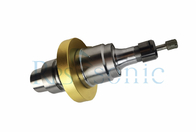

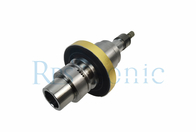

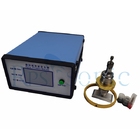

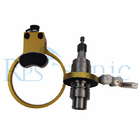

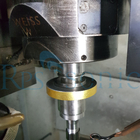

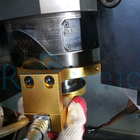

| Quantity: | |
| Place of Origin | China |
|---|---|
| Brand Name | Rps-sonic |
| Certification | CE |
| Model Number | RPS-M20-R |
| Minimum Order Quantity | 1pcs |
| Price | negotiable |
| Packaging Details | CARTON |
| Delivery Time | 1DAYS |
| Payment Terms | T/T |
| Supply Ability | 200PCS/MONTH |
| Frequency | 20Khz | Power | 1000w |
|---|---|---|---|
| Horn Material | Soft Steel Titanium Alloy | Amplitude | 15 - 50 µm |
| Wear Ratio | Tungsten 1.5:1 And Glass 100:1 | Gap Overcut | 0.02-0.1 Mm |
| Grit Size(d0) | 100 – 800 | ||
| High Light | 20Khz Ultrasonic Machining Machine,Honeycomb Ultrasonic Machining Machine,CNC Ultrasonic Assisted Machining | ||
CNC 20Khz Ultrasonic Machining machine for honeybomb cutting and ultrasonic drilling
Parameter
| Item | Parameter |
| Abrasive | Boron carbide, aluminium oxide and silicon carbide |
| Grit size(d0) | 100 – 800 |
| Frequency of vibration (f) | 19 – 25 kHz |
| Amplitude of vibration (a) | 15 - 50 µm |
| Tool material | Soft steel titanium alloy |
| Wear ratio | Tungsten 1.5:1 and glass 100:1 |
| Gap overcut | 0.02-0.1 mm |
Description
An ultrasonically vibrating mill consists of two major components, an electroacoustic transducer and a sonotrode, attached to an electronic control unit with a cable. An electronic oscillator in the control unit produces an alternating current oscillating at a high frequency, usually between 18 and 40 kHz in the ultrasonic range. The transducer converts the oscillating current to a mechanical vibration. Two types of transducers have been used in ultrasonic machining; either piezoelectric or magnetostrictive:
Piezoelectric transducer
This consists of a piece of piezoelectric ceramic, such as barium titanate, with two metal electrodes plated on its surface. The alternating voltage from the control unit applied to the electrodes causes the piezoelectric element to bend back and forth slightly, causing it to vibrat
Magnetostrictive transducer
This consists of a cylinder of ferromagnetic material such as steel inside a coil of wire. Magnetostriction is an effect which causes a material to change shape slightly when a magnetic field through it changes. The alternating current from the control unit, applied to the coil, creates an alternating magnetic field in the magnetostrictive cylinder which makes it change shape slightly with each oscillation, causing it to vibrate.
Application
Since ultrasonic vibration machining does not use subtractive methods that may alter the physical properties of a workpiece, such as thermal, chemical, or electrical processes, it has many useful applications for materials that are more brittle and sensitive than traditional machining metals.Materials that are commonly machined using ultrasonic methods include ceramics, carbides, glass, precious stones and hardened steels.These materials are used in optical and electrical applications where more precise machining methods are required to ensure dimensional accuracy and quality performance of hard and brittle materials. Ultrasonic machining is precise enough to be used in the creation of microelectromechanical system components such as micro-structured glass wafers.
In addition to small-scale components, ultrasonic vibration machining is used for structural components because of the required precision and surface quality provided by the method. The process can safely and effectively create shapes out of high-quality single crystal materials that are often necessary but difficult to generate during normal crystal growth.As advanced ceramics become a greater part of the structural engineering realm, ultrasonic machining will continue to provide precise and effective methods of ensuring proper physical dimensions while maintaining crystallographic properties
Advantages
Ultrasonic vibration machining is a unique non-traditional manufacturing process because it can produce high-precision parts made of hard and brittle materials that are usually difficult to machine. In addition, ultrasonic processing can produce fragile materials such as glass and non-traditional materials. Conductive metals that cannot be processed by alternative methods (such as electrical discharge machining and electrochemical machining). Ultrasonic machining can produce high tolerance parts because the processed material is not deformed. There is no deformation because the ultrasonic welding head will not generate heat to the workpiece, which is beneficial because the physical characteristics of the part will always be consistent. In addition, no burrs are generated during this process, so fewer operations are required to produce finished parts.
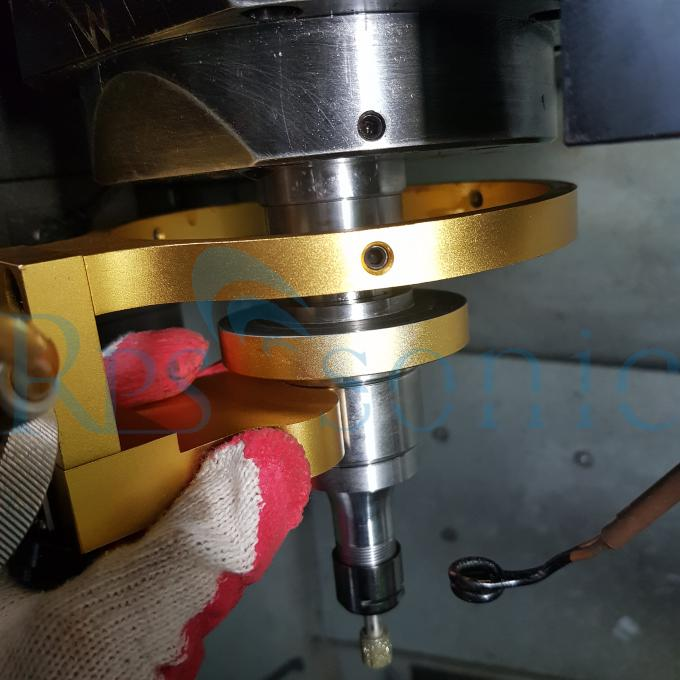
| Frequency | 20Khz | Power | 1000w |
|---|---|---|---|
| Horn Material | Soft Steel Titanium Alloy | Amplitude | 15 - 50 µm |
| Wear Ratio | Tungsten 1.5:1 And Glass 100:1 | Gap Overcut | 0.02-0.1 Mm |
| Grit Size(d0) | 100 – 800 | ||
| High Light | 20Khz Ultrasonic Machining Machine,Honeycomb Ultrasonic Machining Machine,CNC Ultrasonic Assisted Machining | ||
CNC 20Khz Ultrasonic Machining machine for honeybomb cutting and ultrasonic drilling
Parameter
| Item | Parameter |
| Abrasive | Boron carbide, aluminium oxide and silicon carbide |
| Grit size(d0) | 100 – 800 |
| Frequency of vibration (f) | 19 – 25 kHz |
| Amplitude of vibration (a) | 15 - 50 µm |
| Tool material | Soft steel titanium alloy |
| Wear ratio | Tungsten 1.5:1 and glass 100:1 |
| Gap overcut | 0.02-0.1 mm |
Description
An ultrasonically vibrating mill consists of two major components, an electroacoustic transducer and a sonotrode, attached to an electronic control unit with a cable. An electronic oscillator in the control unit produces an alternating current oscillating at a high frequency, usually between 18 and 40 kHz in the ultrasonic range. The transducer converts the oscillating current to a mechanical vibration. Two types of transducers have been used in ultrasonic machining; either piezoelectric or magnetostrictive:
Piezoelectric transducer
This consists of a piece of piezoelectric ceramic, such as barium titanate, with two metal electrodes plated on its surface. The alternating voltage from the control unit applied to the electrodes causes the piezoelectric element to bend back and forth slightly, causing it to vibrat
Magnetostrictive transducer
This consists of a cylinder of ferromagnetic material such as steel inside a coil of wire. Magnetostriction is an effect which causes a material to change shape slightly when a magnetic field through it changes. The alternating current from the control unit, applied to the coil, creates an alternating magnetic field in the magnetostrictive cylinder which makes it change shape slightly with each oscillation, causing it to vibrate.
Application
Since ultrasonic vibration machining does not use subtractive methods that may alter the physical properties of a workpiece, such as thermal, chemical, or electrical processes, it has many useful applications for materials that are more brittle and sensitive than traditional machining metals.Materials that are commonly machined using ultrasonic methods include ceramics, carbides, glass, precious stones and hardened steels.These materials are used in optical and electrical applications where more precise machining methods are required to ensure dimensional accuracy and quality performance of hard and brittle materials. Ultrasonic machining is precise enough to be used in the creation of microelectromechanical system components such as micro-structured glass wafers.
In addition to small-scale components, ultrasonic vibration machining is used for structural components because of the required precision and surface quality provided by the method. The process can safely and effectively create shapes out of high-quality single crystal materials that are often necessary but difficult to generate during normal crystal growth.As advanced ceramics become a greater part of the structural engineering realm, ultrasonic machining will continue to provide precise and effective methods of ensuring proper physical dimensions while maintaining crystallographic properties
Advantages
Ultrasonic vibration machining is a unique non-traditional manufacturing process because it can produce high-precision parts made of hard and brittle materials that are usually difficult to machine. In addition, ultrasonic processing can produce fragile materials such as glass and non-traditional materials. Conductive metals that cannot be processed by alternative methods (such as electrical discharge machining and electrochemical machining). Ultrasonic machining can produce high tolerance parts because the processed material is not deformed. There is no deformation because the ultrasonic welding head will not generate heat to the workpiece, which is beneficial because the physical characteristics of the part will always be consistent. In addition, no burrs are generated during this process, so fewer operations are required to produce finished parts.









Ultrasonic Welding Equipment Ultrasonic Welding Transducer Ultrasonic Welding Converter Ultrasonic Liquid Processor Ultrasonic Cutting Equipment Ultrasonic Spray Nozzles Ultrasonic Power Supply Ultrasonic Soldering Equipment Ultrasonic Welding Horn Ultrasonic Assisted Machining Ultrasonic Testing Equipment
content is empty!